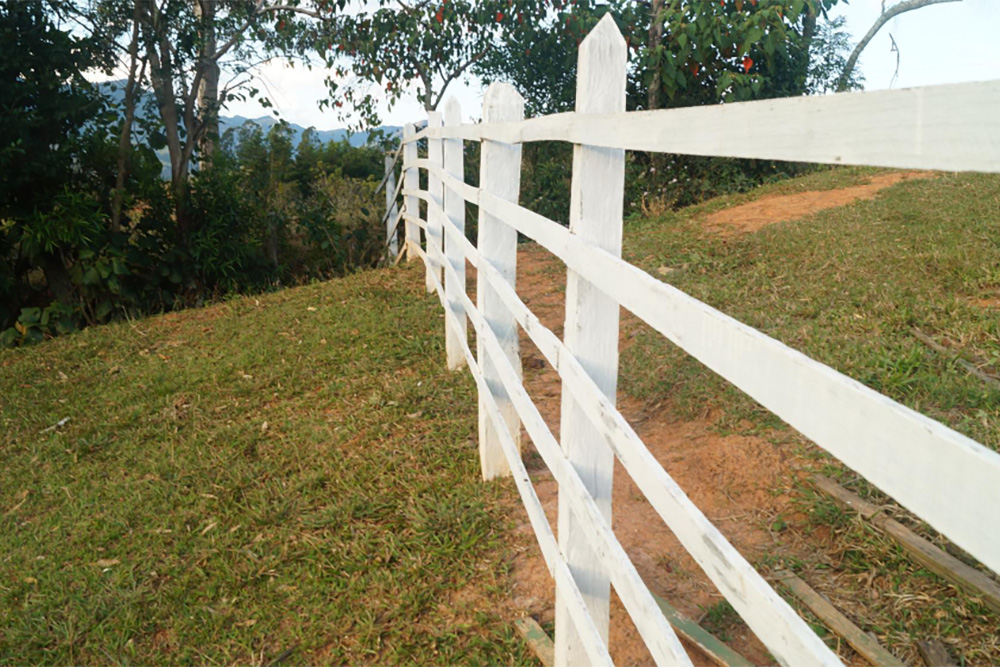
A leaning fence can be more than just an eyesore; it's often a sign of underlying issues that could compromise your property's security and value. While a slight tilt might not seem urgent, ignoring it can lead to more significant damage and costly repairs down the line. A sturdy, upright fence provides privacy, enhances curb appeal, and keeps your family and pets safe.
If you've noticed your fence starting to slant, you're probably wondering what caused it and what the best fix is. This guide will walk you through the common reasons fences lean and provide clear, step-by-step solutions to address the problem. We'll cover everything from simple post reinforcement to more complex replacements, helping you restore your fence's stability and appearance.
Understanding why your fence is leaning is the first step toward a lasting solution. In places like Orlando, the combination of heavy rainfall, humid conditions, and strong winds can put significant stress on outdoor structures. Here are the most frequent culprits behind a tilting fence.
Wooden fence posts are the most common victims of rot. Over time, constant exposure to moisture in the soil causes the wood to decay, especially at the base where it's buried. This weakens the post's foundation, making it unable to support the weight of the fence panels. Pests like termites can also contribute to the deterioration, eating away at the wood and compromising its structural integrity. Once a post is rotted or broken, it can no longer stand straight, causing the entire section to lean.
The stability of your fence depends heavily on how securely its posts are set in the ground. If the post holes aren't deep enough, the posts won't have enough support to withstand pressure from wind, soil movement, or even the weight of the fence itself. A general rule of thumb is that at least one-third of the post's total length should be buried underground. For an 8-foot post, that means a hole depth of at least 2.5 to 3 feet. Anything less, and you're risking a lean.
Soil is not always static. Heavy rains, which are common in Florida, can wash away soil around the base of your fence posts, a process known as erosion. This loosens the posts and reduces their stability. In other cases, the soil itself can shift or settle over time, especially in areas with poor drainage or sandy soil types. This movement can cause the concrete footing to tilt, taking the post and the rest of the fence with it.
Strong winds exert immense pressure on the flat surface of a fence panel. During a severe storm or hurricane, this force can be strong enough to push a fence over, especially if the posts are already weakened or not set deep enough. Even consistent, moderate winds can gradually work posts loose over time, leading to a slow but steady lean.
Sometimes, the cause is external. Heavy objects leaning against the fence, such as stacked firewood or landscaping materials, can put constant pressure on a section. Similarly, overgrown tree roots can push against fence posts from underground, forcing them out of alignment. Even climbing vines, while beautiful, can add significant weight and stress to a fence over the years.
Once you've identified the cause, you can determine the right repair strategy. Some fixes are straightforward and can be a weekend DIY project, while others may require professional help.
If the post is still solid and the lean is minor, you might be able to reinforce it without a full replacement.
If the post is rotted at its base or broken, reinforcement won't be enough. The post needs to be replaced.
While some homeowners enjoy a good DIY challenge, fence repair can be strenuous and complex. You might want to consider professional fence repair in Orlando, FL, if:
A professional fencing contractor has the experience and equipment to diagnose the problem accurately and implement a durable, long-lasting solution. They can ensure posts are set to the correct depth and that the materials used are suited for the local climate, saving you from future headaches.
A leaning fence is a problem that only gets worse with time. Addressing it promptly not only restores your home's appearance but also ensures your fence continues to provide the security and privacy you rely on. By identifying the root cause and choosing the right repair method, you can get your fence standing tall and strong once again.
If you're dealing with a wobbly or leaning fence and need a reliable solution, don't hesitate to seek expert help. For professional fence repair in Orlando, FL, contact Wulff Fence today. Our experienced team can assess the damage and provide a free estimate for a sturdy, professional repair that will last for years to come.